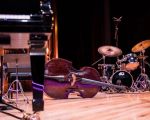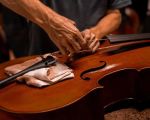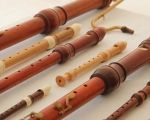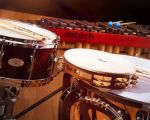- 1-What-is-a-Sackbut-Musical-Instrument
- 2-Historical-Origins-and-Evolution
- 3-Unique-Sound-Characteristics
- 4-Modern-Applications-and-Where-to-Find-Them
1. What is a Sackbut Musical Instrument?
The sackbut is a fascinating early brass instrument that predates the modern trombone. Originating in the Renaissance and Baroque periods, it holds a special place in the evolution of brass instruments. Unlike its contemporary trombone counterpart, the sackbut features a narrower bore and a more subtle, softer tone, which gives it a unique voice in historical and modern music ensembles.
Understanding what a sackbut musical instrument is requires a dive into its design and function. The instrument is essentially a slide trumpet with a telescoping slide mechanism that allows players to adjust pitch continuously, much like today’s trombone. However, its construction emphasizes clarity and blend over sheer power, making it ideal for ensemble playing in both sacred and secular settings.
This distinctive instrument not only shaped the soundscape of Renaissance music but also influenced how brass instruments evolved, providing a bridge between medieval horns and the robust trombones we see today.
2. Historical Origins and Evolution
The sackbut's story begins in the 15th century, where it was widely used across Europe, especially in regions such as Italy, France, and England. The name "sackbut" itself is believed to derive from the Old French word “saqueboute,” meaning “push-pull,” a direct reference to its sliding mechanism.
During the Renaissance, sackbuts were integral in both court music and church settings. They accompanied vocalists and other instruments, providing harmonic depth and dynamic contrast. Historical records and artwork frequently depict sackbuts in ensembles, underscoring their importance in the musical culture of the time.
Over the centuries, the sackbut gradually evolved, both in design and musical function, ultimately transforming into the modern trombone by the 18th century. Yet, its characteristic mellow tone remained highly regarded, prompting a revival among early music performers and enthusiasts today who seek authentic Renaissance sounds.
3. Unique Sound Characteristics
The sackbut’s sound is distinctively warm, intimate, and less brassy compared to the modern trombone. This softer tone makes it perfect for blending in polyphonic textures common in Renaissance compositions. Players can execute subtle dynamics and expressive slides, bringing a vocal quality to the music that few other brass instruments can replicate.
Its narrower bore and bell shape contribute to a more focused and gentle projection, which historically suited indoor performances in churches and royal chambers. Today, musicians and musicologists appreciate this characteristic for historically informed performances, recreating the authentic soundscapes of early music.
Notably, famous composers like Giovanni Gabrieli and Heinrich Schütz composed works that featured sackbuts prominently, showcasing its expressive capabilities and vital role in Renaissance and early Baroque orchestration.
4. Modern Applications and Where to Find Them
Although the sackbut might seem like a relic from the past, it continues to inspire musicians and instrument makers today. Early music ensembles frequently feature sackbuts to achieve authentic period sounds, while some contemporary composers incorporate the instrument's unique timbre into modern compositions.
For those interested in experiencing or purchasing a sackbut, reputable retailers and specialized shops offer authentic replicas and modern interpretations. To find the best products and services tailored to sackbut enthusiasts, visiting Beat Trigger provides an excellent resource. Here, you can discover high-quality instruments, expert guidance, and accessories designed to enhance your musical journey.
Whether you're a professional performer, a music historian, or simply curious about early brass instruments, exploring the sackbut opens a window into a rich musical heritage that continues to resonate with audiences today.








